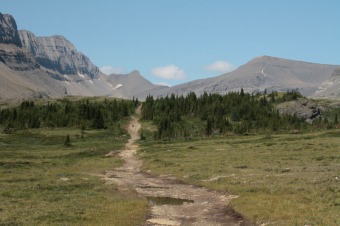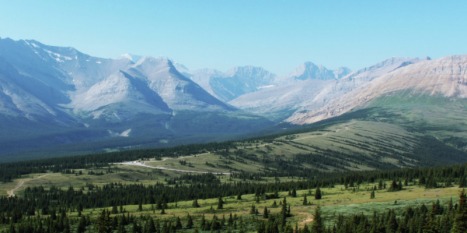Do alpine hiking trails show
evidence of edge effects?
evidence of edge effects?
Summary

Figure 1: Human disturbance in an alpine meadow
Alpine tundra is a fragile community type that tends to recover very slowly following disturbance (Ebersole 2002; Willard, Cooper & Forbes 2007). In recent years, alpine areas have become increasingly popular for tourism and recreation, and appropriate management techniques will be required to maintain the integrity of these systems as tourism pressures increase. Because alpine tundra is a relatively poorly-understood biome, the first step towards good management is an increased understanding of the effects of recreational activities on these environments.
The objective of this study is to gain insight into how hiking impacts trailside plant communities in alpine tundra systems. In order to look into this question I surveyed plant community data on and near a hiking trail on Cardinal Divide (Figure 2), in the Front Ranges of the Canadian Rockies. I examined plant community conditions on, near and far away from the trail. I also collected information regarding slope, aspect and soil compaction. These data will be analysed using regression and multivariate ordination techniques in order to draw out patterns in the vegetation community at various distances from the hiking trail.
The objective of this study is to gain insight into how hiking impacts trailside plant communities in alpine tundra systems. In order to look into this question I surveyed plant community data on and near a hiking trail on Cardinal Divide (Figure 2), in the Front Ranges of the Canadian Rockies. I examined plant community conditions on, near and far away from the trail. I also collected information regarding slope, aspect and soil compaction. These data will be analysed using regression and multivariate ordination techniques in order to draw out patterns in the vegetation community at various distances from the hiking trail.

